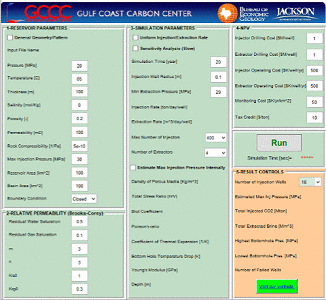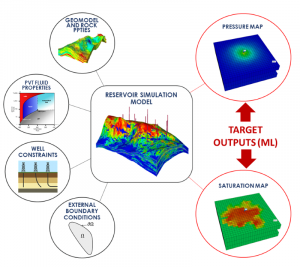Research
1- Field-Scale Simulation
Field-scale simulation is an important technique for improving our understanding of processes associated with underground reservoirs. One of our current research topics focuses on field-scale modeling and simulation for CO2 injection in saline aquifers and oil and gas reservoirs using field data.
1.a. Reservoir Modeling of CO2 Sequestration in Subsurface Formations
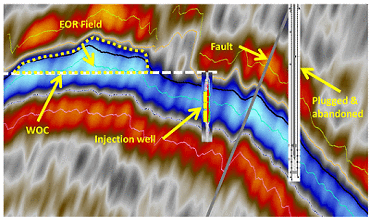
Geological storage of CO2 has been proposed by many as an important approach to tackling climate change. Active oil and gas reservoirs and connected saline aquifers are among the immediate candidates for CO2 sequestration, owing to their proven sealing capabilities and good characterization. We have done an extensive study on numerical modeling and simulation of multiphase flow systems assiciated with CO2 storage in depleted reservoirs such as Cranfield in western Mississippi, as well as U.S. Gulf Coast reservoirs for EOR projects.
To learn more, please see Hoseeini et al., Int. J. Greenh. Gas Con., 2013.
1.b. Pressure Monitoring and Geomechanical Analysis for CO2 Injection Projects
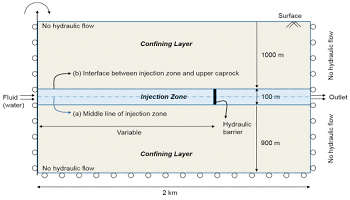
The success of CO2 injection into geological formations is contingent on the geomechanical integrity of the site. A key task that allows us to evaluate the risk of geomechanical failure is the precise prediction of pore-pressure buildup and subsequent change in the state of stresses during and after the fluid injection. The storage formations must have sufficient capacity and could avoid migration of CO2 to the surface. From geomechanics point of view, the pressure caused by CO2 injection, should not exceed the formation strength and should not cause activation of existing faults. We have focused on developing analytical methods and numerical simulations to investigate the spatiotemporal evolution of the ratio of change in total stress to change in pore pressure ∆σ/∆P during CO2 injection under various conditions.
To learn more, please see Kim & Hosseini, Int. J. Rock Mech. Min. Sci., 2015.
1.c. Geological CO2 Storage Capacity Estimation using EASiTool
An enhanced analytical simulation tool (EASiTool) was developed to estimate CO2 storage capacity in saline aquifers. The tool provides a quantitative estimate of storage capacity for multi-well injection/extraction systems by applying novel analytical models for both closed- and open-boundary saline aquifers and analyzes the potential of enhancing storage efficiency by integrating active brine management (brine extraction technology). Brine extraction would enhance the storage capacity and partially control the pressure buildup. EASiTool includes a user-friendly interface and can be used to provide reservoir and basin-scale storage capacity estimates. Please contact project PI Seyyed A. Hosseini to ask for a free copy of program and other inquiries.
To learn more, please see Ganjdanesh & Hosseini, Int. J. Greenh. Gas Con., 2018.
1.d. CO2 Storage Mechanisms at CO2-EOR Sites
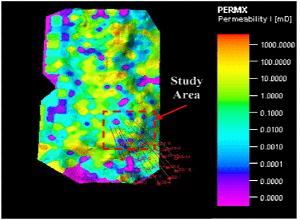
One of the important issues in geological storage of CO2 is understanding and forecasting its distribution over a geological time period. The main processes controlling the trapping of CO2 during CO2 storage are stratigraphic trapping, residual trapping, solubility trapping, and mineral trapping. In an study, we investigated the partitioning of CO2 in different phases through different operation development strategies. The main purpose of this study was to answer questions associated with the relationship between EOR operational strategies and CO2 utilization ratios, and to understand the impact of the different CO2 trapping mechanisms on this relationship. In the specific case of SACROC, and in order to answer these questions with high confidence, we integrated three main elements of field assessment: physical field characterization, production and pressure history, and reservoir simulation.
To learn more, please see Hosseininoosheri et al. Int. J. Greenh. Gas Con., 2018.
2- Application of Data Analytics in Subsurface Science
Our team is actively involved in developing machine learning algorithms designed for better modeling and characterization of subsurface fluid movement. Our recent work has focused on developing ML models for CO2 leakage detection and development of fast predictive models for modeling Co2 and pressure plume behavior in subsurface. Our team currently is part of Department of Energy SMART initiative.


